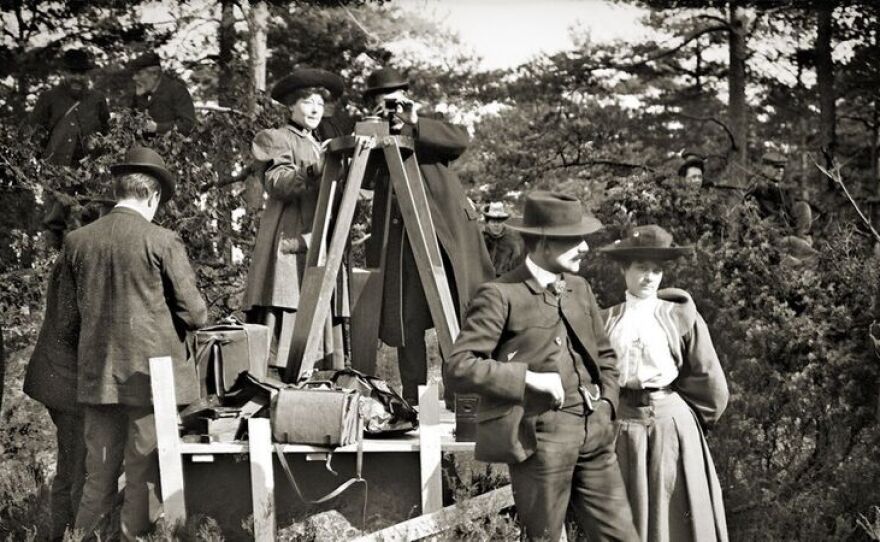Companion viewing
"The Consequences of Feminism" (1906)
"The Drunken Mattress" (1906)
"Forgotten Silver" (1995)
"The Lost Garden: The Life and Cinema of Alice Guy-Blaché" (1996)
A new documentary — opening July 19 at Digital Gym Cinema — called “Be Natural: The Untold Story of Alice Guy-Blaché” introduces audiences to the first woman filmmaker.
“Be Natural” is difficult to review because filmmaker Pamela B. Green has an obvious passion for her subject and did an amazing job uncovering new material about Alice Guy Blaché. Yet the film itself suffers from some serious flaws.
First, it fudges the facts a bit to make Guy-Blaché fit into a narrative that allows Green to be her champion. Although Guy-Blaché has not attained the fame she deserves her story is not exactly untold. There have been a number of books about her as well as DVD/Bluray collections featuring her films and she has appeared in other documentaries. Many of her films have been lost but that has to be put into the context that about 75 percent of all silent films no longer exist. So while sexism definitely played a part in her not having her proper place in history there are other reasons contributing to that and other people have worked to rescue her from oblivion before Green.
Green also doesn’t seem to have enough confidence that archival materials alone would sustain the film. She has access to a couple of video interviews with the filmmaker as well as a good number of her films, but these are delivered to us as mere snippets. She also unearths photos and letters but chooses to speed through them in animated graphics. (Green’s film credits are mostly working on title sequences and she has an obvious flair for graphic design.)
For contrast, check out Kent Jones' documentary "Hitchcock/Truffaut" in which he brought to life with elegant simplicity a taped interview between the two cinema icons. Jones recognized that what these two men were saying would rivet audiences. Similarly, Noah Baumbach and Jake Paltrow had no fear in doing the ultimate talking head documentary "De Palma" in which director Brian De Palma just sits and talks to the camera with only the occasional, well-selected clip to cut away to. A little of this kind of confidence in the material of Guy-Blaché interviews or her films by Green would have been nice.
Green also opts to include dozens of interviews with film historians, women filmmakers and celebrities — some of which are onscreen for mere seconds and none of which contribute any real insights. Actress Evan Rachel Wood appears to merely wonder what it must have been like to be a working mother back then. And actress/filmmaker Julie Delpy has her one-sentence comment edited with three rapid cuts for no apparent reason. Some of the interviews are of such poor audio and/or video quality that you wonder why they are even included. Most of the people begin the film pleading complete ignorance of who Guy-Blaché was, but Green later returns to them as if they are now experts on her. Green could have easily reduced the number to a handful of interviews but allowed each person more time to convey thoughtful comments. She seems to turn to these people as some sort of affirmation that Guy-Blaché was indeed important but that fact is readily supported just by the clips of her films. We don’t need someone to point out that the acting looks natural or that a visual gag is funny, we can clearly see that.
Green also focuses on her detective work to uncover materials from distant relatives and film archives. Some of this is fascinating and yielded great material but she didn’t need to include a lame Skype interview with facial recognition expert who explains how he deduced that a short clip was indeed Guy-Blaché. I would have preferred those minutes devoted to longer clips of her films or of the old interviews with her.
The film employs a lot of nice graphics work and 2D animation to bring photos and other materials to life. But sometimes the graphics as with the interviews start to pile up and just feel cluttered.
At one point someone says the crucial thing is to see her films and that’s what Green denies us. She teases us with brief clips usually with some sort of narration over it and we never get a chance to luxuriate in her images and judge for ourselves what her talents were. I would have loved a few clips that lasted for more than a minute or even a montage of clips without the distraction of someone talking on top of them.
But the bottom line is that Guy Blaché deserves her spot in history as the first woman filmmaker and one who was skilled and innovative. So any film working to further that cause is worth seeing and while Green may not be the best filmmaker for the job kudos to her for doing some productive detective work to uncover new material and for making more people aware of who Guy-Blaché was.







